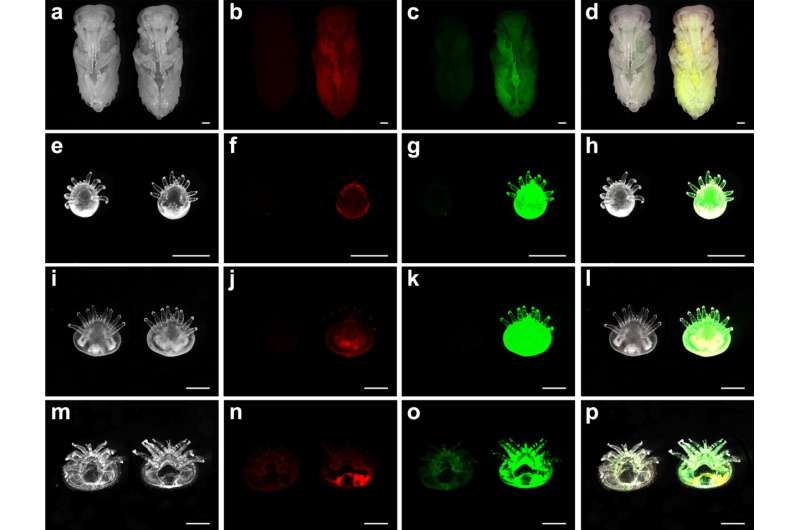This article has been reviewed according to Science X's editorial process and policies. Editors have highlighted the following attributes while ensuring the content's credibility:
fact-checked
peer-reviewed publication
trusted source
proofread
New research could help honeybees fight off their worst enemy

New University of Alberta research could help in the fight against the honeybee's number one enemy—the Varroa mite. Also known as the Varroa destructor, the parasite is a major contributor to annual losses of 30% to 40% of bee colonies in Canada.
Effective control of the mite relies on knowing when and what it is feeding on in the lifespan of the bee. Until five years ago it was common wisdom among beekeepers that the Varroa fed on the hemolymph or blood of the bee throughout its development.
In 2019, a study published in the Proceedings of the National Academy of Sciences demonstrated the mite feeding on a layer of the bee's fat just under the exoskeleton. The findings caused a global "paradigm shift" in our understanding of the parasite, says Olav Rueppell of the Department of Biological Sciences.
But the 2019 study was restricted to adult bees, so Rueppell and his collaborators at the Chinese Academy of Agricultural Sciences in Beijing decided to examine what Varroa mites were doing to bee pupae inside the hive's wax cells, where both the bees and mites are at their reproductive stage.
It turns out beekeepers were at least partly right all along, according to a study published in January by Rueppell and his collaborators in Nature Communications. At that stage in the bee's life, the Varroa indeed feeds on hemolymph. Getting that relationship right is crucial for coming up with control measures to eradicate the pest.
"It is really important to understand the basic biology of this interaction between the honeybee host and the mite," says Rueppell, especially because both are arthropods. "They're both basically bugs and so closely related … it's very hard to kill one without killing or harming the other, and as much information as we can get will help us."
Rueppell and his team at the U of A are focused mainly on coming up with control measures for the Varroa and other honeybee pests by developing pesticides and also boosting the bee's natural defenses. Existing pesticides—especially highly used synthetic chemicals called amitraz, coumaphos and fluvalinate—are losing their potency because of the mite's evolving resistance.
"The bees are not completely helpless, but we need to help them in other ways to better defend themselves," says Rueppell. "We can breed for more disease resistance, but it's not easy because they mate out in the open, and artificial insemination is really hard."
Rueppell says the biggest threats to honeybee health are commonly summarized as "the four Ps"—pesticides, poor nutrition, pathogens and parasites. The Varroa mite is considered the most common parasite, listed as the top cause of mortality in 6 out of 10 provinces in a 2020 survey by the Canadian Association for Professional Apiculturists.
There is another potentially worse contender on the horizon already harming bees worldwide—the Tropilaelaps mite, says Rueppell. "It has not yet arrived in Canada, but we are worried about it."
The hope is that a better understanding of how mites feed will give researchers a leg up on controlling the pest, says Rueppell, adding that Alberta alone is home to 40% of Canada's honeybee colonies.
"We are losing control mechanisms for this Varroa mite very quickly. Honeybees in Canada are not endangered as a species, but the industry is threatened by this mite and other stressors, and that industry is significant because bees pollinate a lot of our food supply and commercial crops, such as canola. Their impact in Canada is worth more than $3 billion each year."
More information: Bin Han et al, Life-history stage determines the diet of ectoparasitic mites on their honey bee hosts, Nature Communications (2024). DOI: 10.1038/s41467-024-44915-x
Journal information: Proceedings of the National Academy of Sciences , Nature Communications
Provided by University of Alberta



















